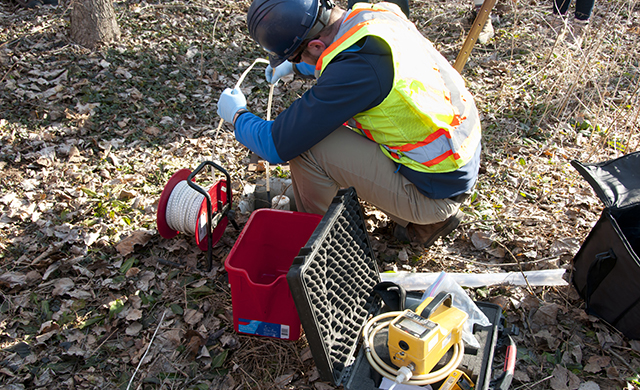Project Summary
ESA was contacted by the President and Senior Counsel of a local savings bank in Bergen County New Jersey regarding groundwater contamination that was detected on their property.
Challenges
During ESA’s research, it was revealed that the bank had granted access to a former gasoline service station (located adjacent to and upgradient of their property) to install a groundwater monitoring well to delineate gasoline contamination detected on the adjacent property. During this sampling, a chlorinated volatile organic compound (cVOC), typically associated with dry cleaning operations was identified in the bank property monitoring well, and the bank was subsequently named as the Responsible Party (RP) by the New Jersey Department of Environmental Protection (NJDEP).
ESA’s Solution
ESA determined that the best course of action to confirm that the bank was not the source of the cVOC contamination –and to determine the source and extent of the contamination — was to conduct a Preliminary Assessment (PA) at the property.
ESA’s PA revealed that the bank’s property was undeveloped land prior to its development with the existing building. The PA also confirmed that cVOCs were never utilized on the property. Therefore, an offsite search of potential RPs was initiated, resulting in the identification of an upgradient dry cleaning facility approx. 500 ft. northeast of the bank property.
Using the NJDEP Offsite Source Ground Water Investigation Technical Guidance document, ESA satisfied the three requirements necessary to conclude that groundwater contamination was, in fact, migrating onto the bank’s property from an adjacent property. Those criteria are:
- A contaminant concentration gradient that is higher at the upgradient property boundary than at the downgradient boundary;
- A potential source of the contamination exists at an upgradient location; and,
- A pathway for the contamination to migrate exists.
Outcome
By following the steps outlined in the NJDEP Guidance, ESA submitted a PA Report that showed the bank was not the source of the chlorinated contamination and that no additional investigation was required. An NJDEP Remedial Action Outcome (RAO) was subsequently issued.
ESA’s Preliminary Assessment potentially saved the bank tens of thousands of dollars and years of unnecessary environmental investigations.




